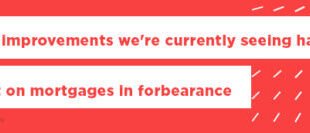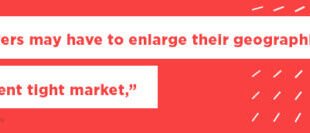
Stated income loans used to be widely available before the housing market crash of 2008.
When the Dodd-Frank Act was created in 2010, it heavily regulated banks and lenders.
However, these loans that require no income docs or no tax returns for contractors and self-employed borrowers are available with more lenders.
Rate Search: Check Today’s Rates and Get Pre-Approved
What Are Stated Income Loans?
Stated income loans, or no-doc loans, are for non-occupying investors looking for short term financing on an investment property they plan to flip or use for rental income. It is now illegal for any consumer to get a stated income mortgage for an owner-occupant property.
These loans are very similar to a hard money loan but are considered a step up because they have lower rates and fees.
Stated Loan Requirements
Lenders that offer stated income mortgages have higher requirements than a typical conventional mortgage loan. Because of this, you will need to have a good credit score, a large amount of cash reserves, and a large down payment because of the increased risk for the lender. The better your financial and credit situation is, the more likely you will be approved and get favorable rates.
- Large amount in savings
- High credit score requirement (700+)
- Bank statements are needed
- High level of income
Stated Income Loan Pros and Cons
|
|
Self-Employed Loan Alternatives
Self-employed borrowers face lots of challenges when it comes to getting a mortgage. A stated income loan used to be a popular mortgage option for self-employed borrowers, but it is now illegal to get one on your primary residence. These self-employed mortgage loans are alternatives to stated income loans.
Bank Statement Loan Program
An alternative to stated income loans is the Bank Statement Loan Program, which is perfect for self-employed borrowers. They require less money down and are available to you if you plan on living in the home as your primary residence. Tax returns are not required; in fact, very little documentation is needed.
How to Qualify?
The following are requirements for the bank statement loan program.
- Must have at least two years of tax returns for the business
- 600 credit score requirement
- 24 months of business bank statements
Asset Qualifier Loans
Asset qualifier loans, or asset depletion loans, are programs for self-employed borrowers as an alternative to stated income loans. You qualify for asset qualifier loans using your assets. You don’t need to prove income or even have an income to qualify. As the name suggests, a lender will use your verified assets as collateral for the loan.
How to Qualify?
- 620 credit score
- List of liquid assets
- 10% down payment
Investor Cash Flow Loans
Investor cash flow loans are for real estate investors who flip homes or create an income flow by renting out properties. A lender will not verify employment with these loans, but 24 months of bank statements are required/
How to Qualify?
- 620 credit score
- 24 months’ of bank statements
- Two years of individual tax returns
- 20% down payment
Finding stated income mortgage lenders
You will need to have great credit, a high downpayment, and a high income to get approved for a stated income loan.
Finding these lenders can be fairly easy with a google search. Remember, they have very high qualifying standards because it is a very risky loan.
Stated income loans will have high-interest rates and lender fees. However, these loans are still much less expensive than other investment loans, like hard money loans.
Speak to a lender and get current rates
Frequently Asked Questions
Do stated income loans still exist?
Yes. Although very rare and only available for real estate investors who will not live in the property.
Are stated income loans coming back?
Most likely, no. They are only available to real estate investors.
How does a stated income loan work?
Lenders do not verify borrower’s employment, income, or tax returns. Instead, they take the borrower’s word on what their income is.



